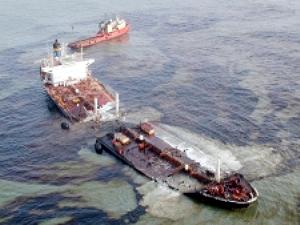Sea creatures flee oil spill, gather near shore
by Jay Reeves, John Flesher, Tamara Lush (AP) — Jun 16, 2010
GULF SHORES, Ala. – Dolphins and sharks are showing up in surprisingly shallow water just off the Florida coast. Mullets, crabs, rays and small fish congregate by the thousands off an Alabama pier. Birds covered in oil are crawling deep into marshes, never to be seen again.
Marine scientists studying the effects of the BP disaster are seeing some strange phenomena.
Fish and other wildlife seem to be fleeing the oil out in the Gulf and clustering in cleaner waters along the coast in a trend that some researchers see as a potentially troubling sign.
The animals’ presence close to shore means their usual habitat is badly polluted, and the crowding could result in mass die-offs as fish run out of oxygen. Also, the animals could easily get devoured by predators.
“A parallel would be: Why are the wildlife running to the edge of a forest on fire?
But, but those Sea Critters, CAN’T RUN onto the Land, most of them.

 On July 27, 2003, the oil tanker
On July 27, 2003, the oil tanker